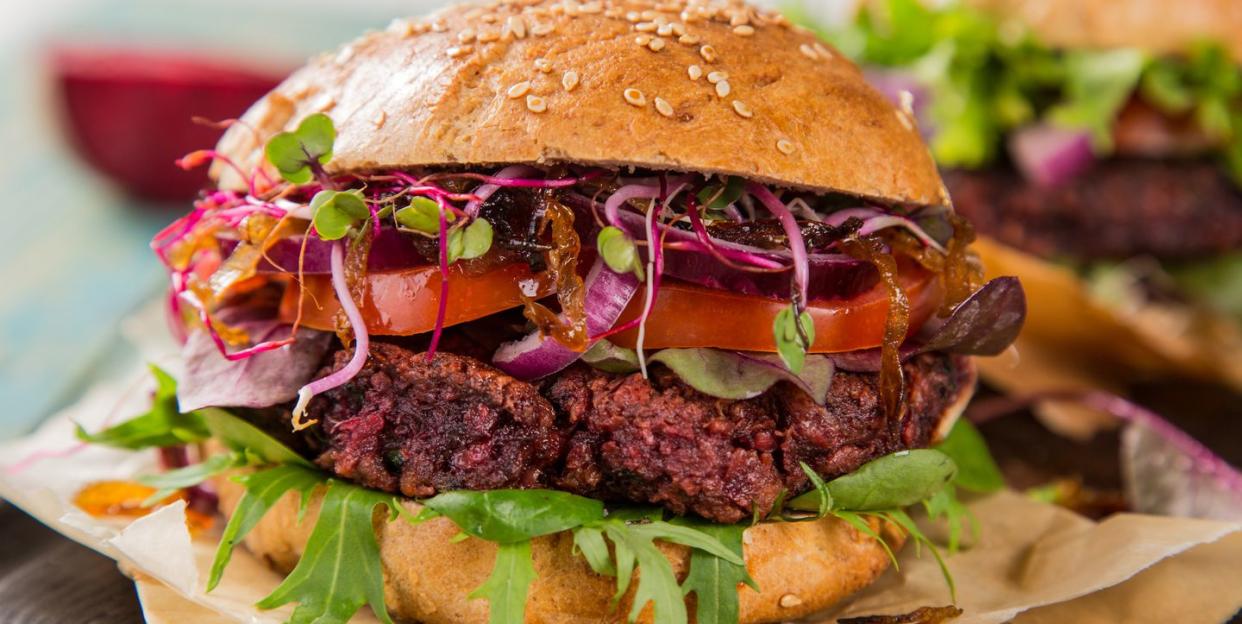Should You Try The Flexitarian Diet That's All Over People's Feeds?

The 21st century has given us so much: smartphones, YouTube videos of dogs, the music of Taylor Swift. It's also brought along so many new fad diets. The names and shorthand would be an alien language to someone visiting from the 1990s—there's keto and Paleo, juicing and intermittent fasting, and the low-carb Dukan diet associated with Kate Middleton following her wedding to Prince William in 2011.
One of those brand new terms is flexitarian, which Merriam-Webster notes first appeared in 1998. It sounds complicated, but the concept couldn't be simpler. What does the diet entail, and should you give it a try? Grab some kale and we'll explain.
What is the flexitarian diet?
If you think the term sounds like vegetarian, then ding ding ding. It's a portmanteau of flexible and vegetarian, and refers to a diet that is mostly vegetarian and plant-based, but with the occasional meat product thrown in. How much meat the person eats is up to them.
Why do people go flexitarian?
Folks may adopt the flexitarian diet for the same reasons they go vegetarian: They like animals, or they understand how the meat industry negatively impacts the planet and want to do their part to reverse climate change. Or they want to save a little money (...though buying a ton of perishable produce every week isn't the cheapest way to live, either, so it may be a wash on the $$$ front).
It also may be a healthier way to live, too, given that red meat and chicken are both capable of raising your cholesterol. There are tons of studies out there explaining why red meat is bad for you, but a recent one found that a daily meat habit triples the amount of a chemical in the body associated with heart disease.
How much meat can you eat on the diet?
Being a flexitarian is great because it's the best of both diet worlds. You get the health benefits and good karma of a plant-based diet, but without the disadvantages of the fully vegetarian life—like struggling to get enough protein.
Plus, it's just an easier lifestyle. A flexitarian doesn't necessarily have to ask a dinner host to make a veggie option for them, or scan a restaurant menu before trying a new place; they may not go chow down at a steakhouse, but they also needn't freak out if they find out there's chicken stock being used to up the rich flavor in a tomato soup.
Plus, the lack of harsh restrictions means you're more likely to stick with this diet. No food is truly off limits! But how much meat are you actually allowed to eat? Well, it's not a prison sentence, and no one's checking in to grade you on how truly flexitarian you are.
You might test out the diet by ditching meat two days a week (Meatless Monday is lonely!), and work up to being vegetarian during the week with meat allowed on weekends. Maybe you have no problem giving up beef, but are still attached to bacon. You're forgiven! This is the flexitarian life. Making it work for you is what the diet is all about.
You Might Also Like

